Astria is developing a decentralized shared sequencer network, aiming to provide fast finality, censorship resistance, composability, and decentralization for Rollups.
By 1912212.eth, Foresight News
With the increasing maturity of Ethereum's layer 2 networks and the significant reduction in gas fees, these networks are showing a booming trend. However, accompanying problems have emerged, such as fees and speed being affected by various factors, leading to unsatisfactory user experience. Against this backdrop, the importance of transaction sequencing has become increasingly prominent, becoming a key factor in solving transaction bottlenecks and optimizing user experience.
In April of this year, Astria, a modular blockchain focusing on shared sequencers, completed a $5.5 million seed round of financing, led by Maven 11, with participation from 1kx, Delphi Ventures, Robot Ventures, and others. Just three months later, Astria completed another $12.5 million in financing, led by dba and Placeholder VC, with participation from Hasu and others.
What is Astria?
Astria is developing a decentralized shared sequencer network, aiming to provide fast finality, censorship resistance, composability, and decentralization for Rollups.
Currently, running a centralized sequencer on L2 is more convenient, cheaper, and easier for users, so mainstream L2s are managed by their own teams. Although L2 users can submit transactions directly to L1 to bypass the sequencer, they must pay transaction gas fees to L1, and transactions may take longer to be finalized.
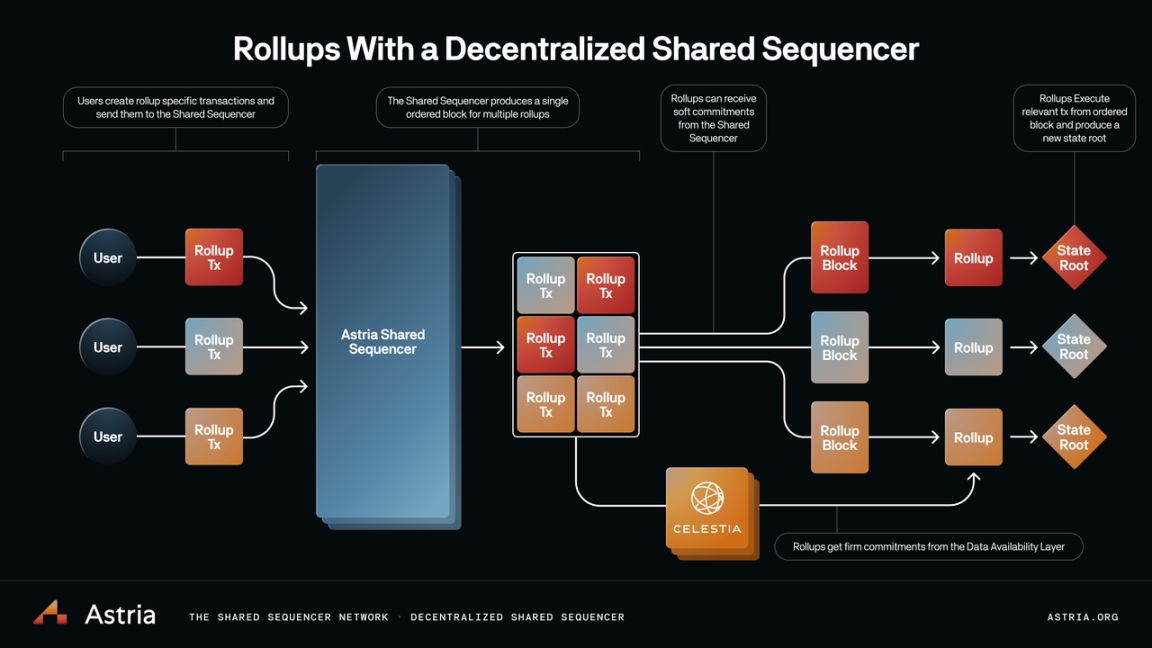
The sequencer controls the sequencing of transactions and theoretically has the right to exclude user transactions. The sequencer can also extract MEV from the transaction group. If there is only one sequencer, the risk of centralization will increase.
Therefore, a decentralized shared sequencer still has its significance.
How does Astria work?
Astria's decentralized sequencer has multiple sequencer nodes to sequence Rollup transactions. In Astria's operation mode, users submit transactions to Rollups, and the transactions automatically enter the memory pool of their respective Rollup nodes, where the combiner is responsible for collecting txns and sending them to the sequencer. Finally, the sequencer aggregates the txns into a shared block and sends a pre-confirmation to the user.
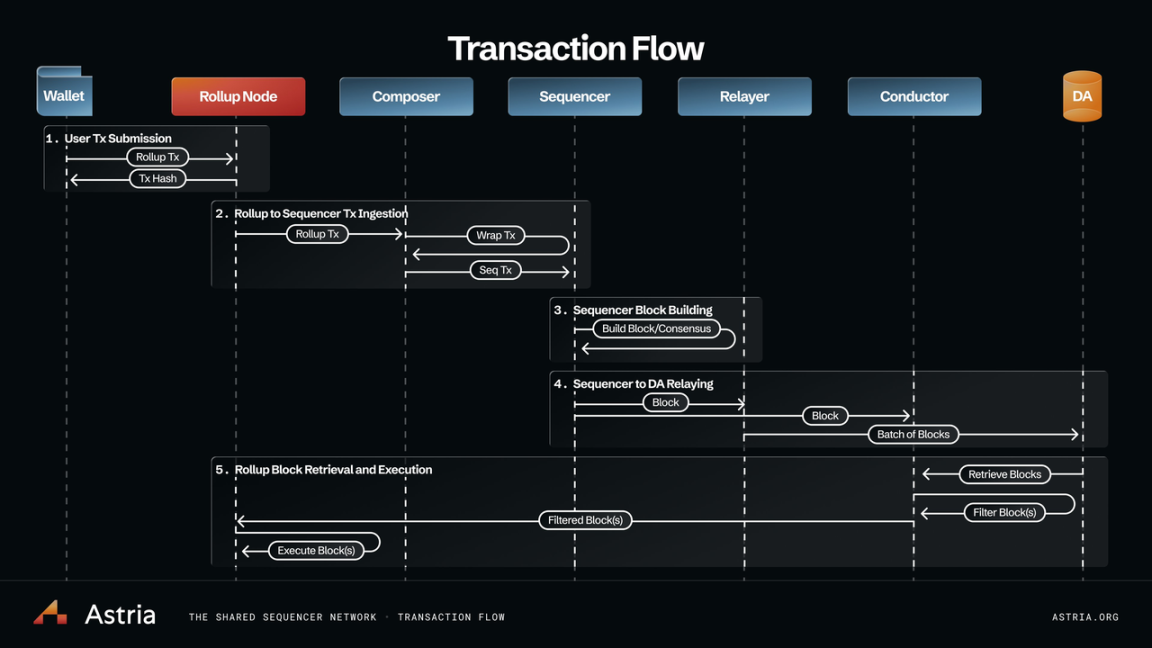
Current sequencers are all based on specific Rollups. Astria, on the other hand, processes blocks for multiple Rollups in batches. Through data compression, more costs can be saved when publishing data to L1. The decentralized shared sequencer network will incentivize participants from multiple Rollup ecosystems to act as validators on the network.
Astria Stack
The main components of Astria include 5 parts: Combiner, Sequencing Layer, Relayer, DA, and Scheduler.
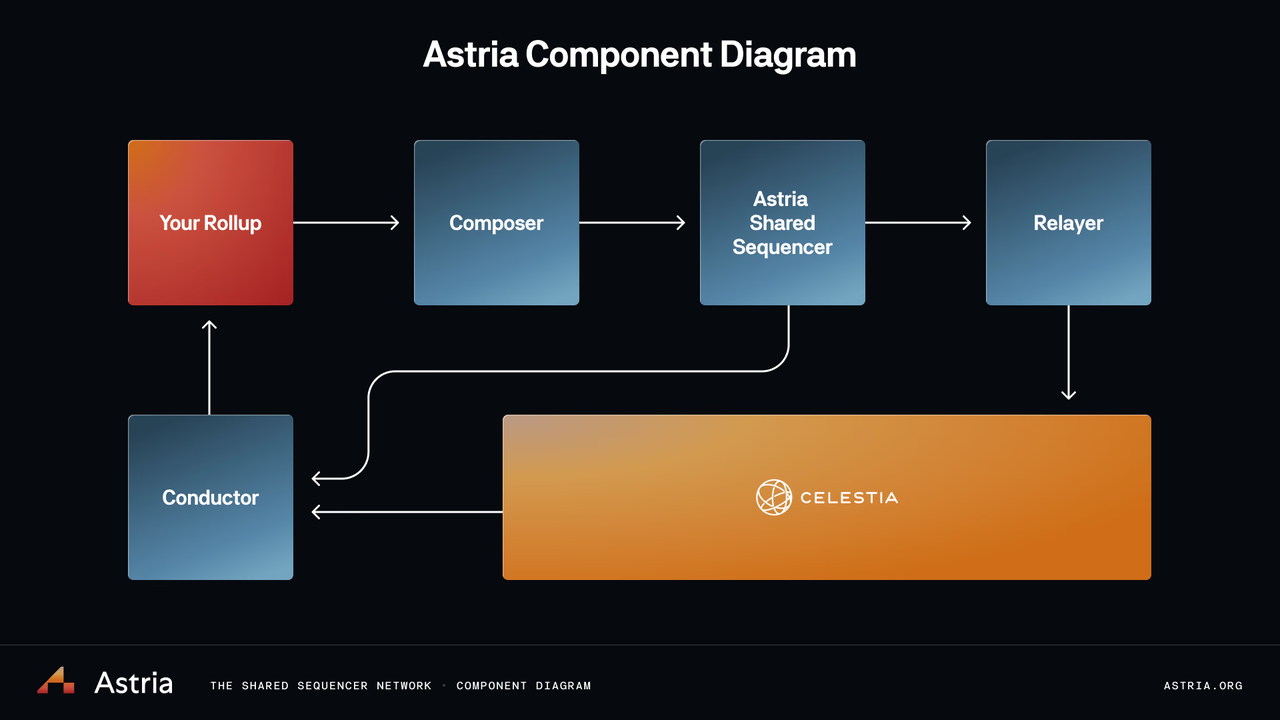
Combiner
Technical professionals may be able to directly use the sequencing layer for better transaction sequencing, but for the vast majority of ordinary users, this would increase the difficulty in practical use. Direct interaction with the sequencing layer requires users to hold sequencer tokens and maintain a sequencer wallet, both of which have a significant negative impact on user experience.
Astria provides a combiner for users to abstract this complexity. The combiner acts as a gas station, bearing the cost of sequencing transactions for users. The combiner also provides unordered guarantees and bundles transactions in the order they are received.
Sequencing Layer
Astria's sequencing layer uses CometBFT as its consensus algorithm. Chains that support CometBFT can support IBC (inter-blockchain communication), meaning they can cross-chain with many other chains.
The uniqueness of Astria's sequencer lies in the fact that the transactions it contains are not executed (delayed sequencing) but are designated to another execution engine, Rollup. Sequencer nodes can choose to act as "validators," meaning they actively participate in the production and finalization of new blocks.
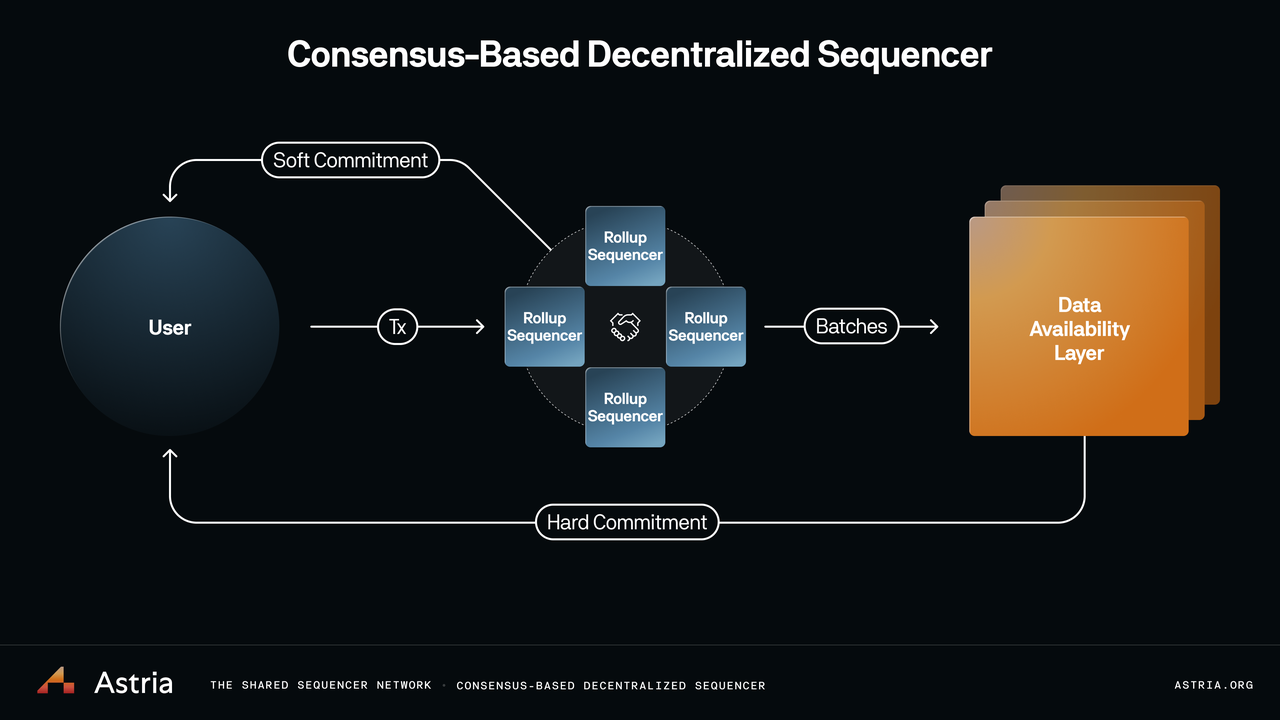
The application logic of Astria's sequencer allows for three main functions:
Sequencing of Rollup data
Value transfer
Changes to the validator set
Relayer
The function of the relayer is to obtain verified blocks from the sequencer and pass them to the DA layer. Since the block time of the sequencer is faster than that of the DA, the relayer will batch process ordered data from multiple sequencer blocks, compress it, and then submit it to the DA.
Each sequencer block can also be obtained by the scheduler before being submitted to the DA. This can achieve improved user experience for fast finality, acting as a soft commit for the execution layer. The dataset sent from the relayer to the DA layer is used as the source of truth and is ultimately extracted from the DA for finality confirmation in Rollup.
DA
Astria uses Celestia as the data availability layer, which is the ultimate destination for all sequencer network-sequenced data. Once data is written to Celestia, the transaction order is considered final, and when a new Rollup node is launched, all data will be extracted from there.
Scheduler
The scheduler can be considered as the consensus implementation of a full Rollup node, similar to the operation node in the OP Stack. The scheduler is the corresponding part of the execution engine, together forming a complete Rollup node. Its role is to extract transactions belonging to the Rollup node from each sequencer block, verify the batched Rollup data, wait for verification to be completed, convert it into a transaction list, and forward it to the execution engine, connecting the sequencer and DA layer to the Rollup execution layer.
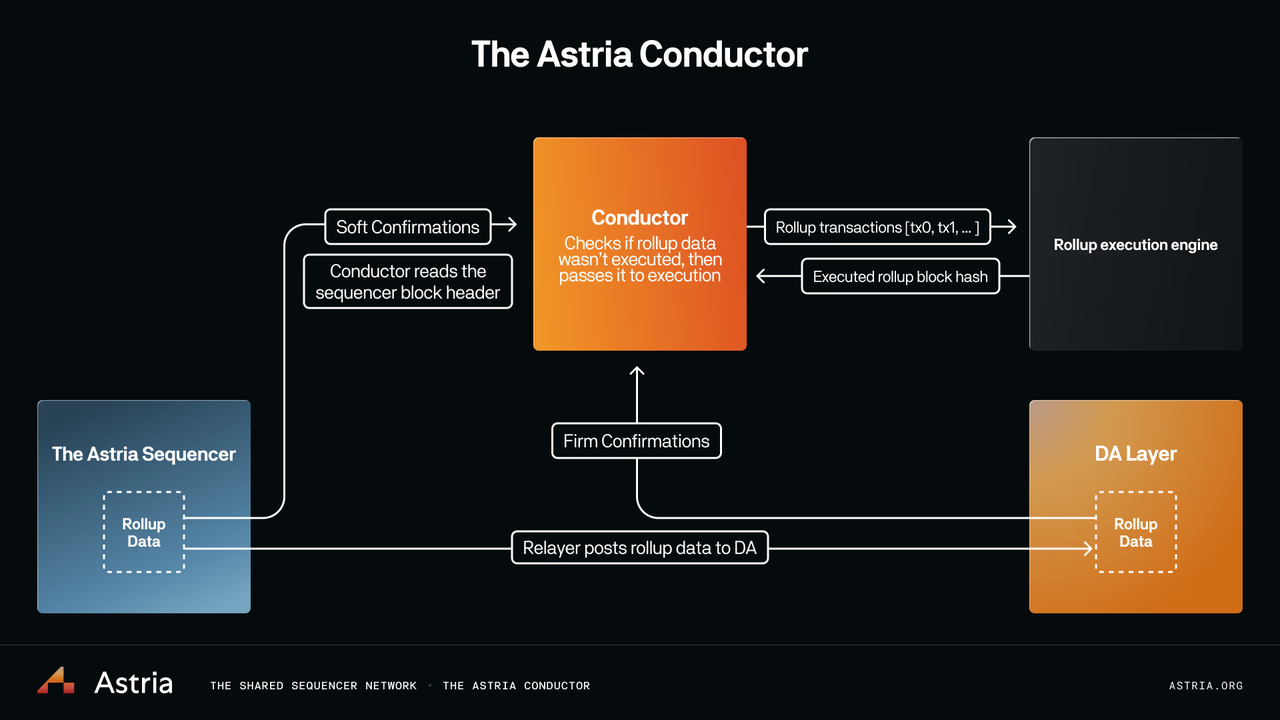
For each sequencer block, it extracts the relevant Rollup data it needs, verifies the batched Rollup data, and once verification is completed, it converts it into a transaction list and forwards it to the execution engine.
免责声明:本文章仅代表作者个人观点,不代表本平台的立场和观点。本文章仅供信息分享,不构成对任何人的任何投资建议。用户与作者之间的任何争议,与本平台无关。如网页中刊载的文章或图片涉及侵权,请提供相关的权利证明和身份证明发送邮件到support@aicoin.com,本平台相关工作人员将会进行核查。




